Lalius: varieties, selection, care, reproduction
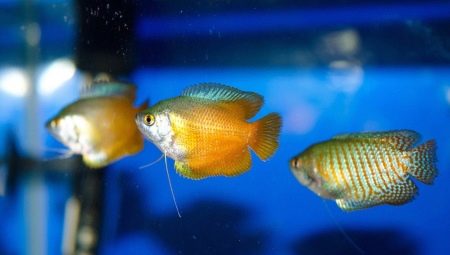
The aquarium fish Lalius is a fairly popular pet among both experienced and novice breeders. Among its obvious advantages, there is a variety of colors, unpretentious content, peaceful disposition. Even a child who dreams of his own underwater kingdom can master the simple rules of keeping this species of aquarium fish. Beautiful and bright fish unusually enliven almost any landscape, they are able to live in an aquatic environment with different parameters. They are good neighbors for most of the medium-sized peaceful inhabitants of the aquarium, they can breed in captivity and please the owner with replenishment.
Description
The representative of the labyrinth fish family, lalius, lives in nature in the warm waters of Indonesia, India, Bangladesh. These aquarium fish are also known as thread carriers or dwarf gourami, but most often they are named after the Latin name Trichogaster lalius. In the natural environment, the fish are painted in red and silver-blue tones, and among the breeding species there are even more exotic variants with a body of neon, green, coral.
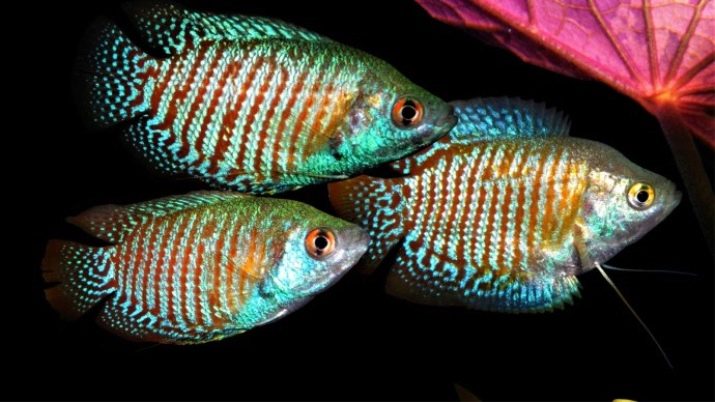
Lyaliusi are schooling fish that also prefer to live in an artificial environment in the company of their relatives. On average, it is recommended to keep from 6-8 individuals at the same time, for which a tank of 60 liters or more will be needed. This compact fish grows up to 7.5-9 cm in length, has a flattened body in the lateral area, a small, short tail. Fins also look unusual in Lalius - in males they are slightly elongated back at an angle.
In the coloration of males, there are phosphorescent dots, which look especially impressive under artificial lighting.
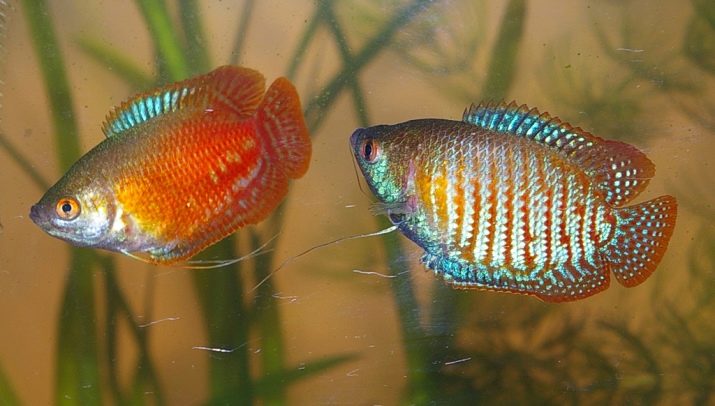
The elongated body of lalius is as if surrounded by fins, on the surface of which red spots can be traced. The head is silvery-blue, brighter in color around the mouth. The pectoral fin is replaced by elongated whiskers, which help the fish to navigate freely even in muddy waters.
With a lack of oxygen, lalii switch from gill breathing to normal breathing, float and gasp for air.
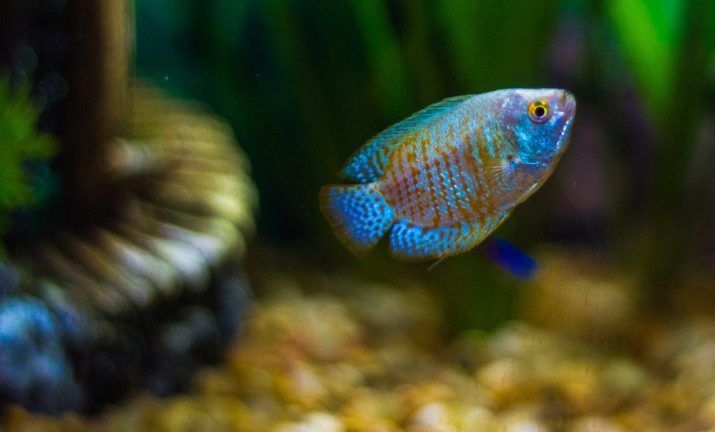
The behavior of the fish also looks quite attractive, especially for the aquarist who prefers pets with a peaceful disposition. In the natural environment, lalii almost do not face dangers, living in shallow stagnant waters of rice fields, slow-flowing streams, small lakes. Their behavior, formed by long-term habits, remains the same in a spacious aquarium. These fish are unhurried, slow, spend most of their time in dense bottom thickets and are afraid of noise or aggressive behavior.
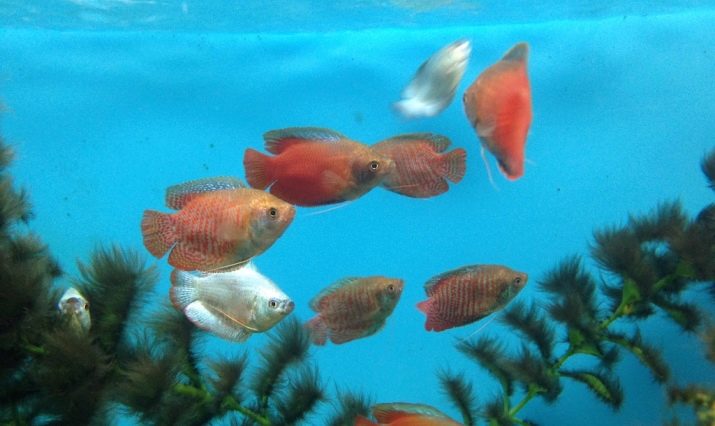
Views
Lyaliusi are distinguished by a variety of breeding (bred by amateurs) species. You can choose one of the following varieties of the classic dwarf gourami as a pet for your aquarium.
- Cobalt. A fish with a deep blue body. Cobalt lalius looks impressive, but its female is more modestly colored. Her bluish-silver body, when artificially illuminated, casts green and yellow.
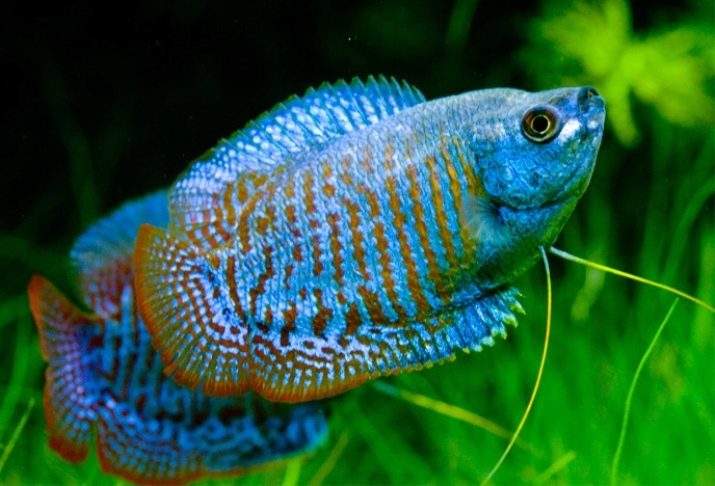
- Red or neon. The males of this subspecies have a crimson-red basic background, in the head and dorsal region the color is turquoise. The neon lalius looks unusual and decorative, its dorsal fin is decorated with a blue comb.
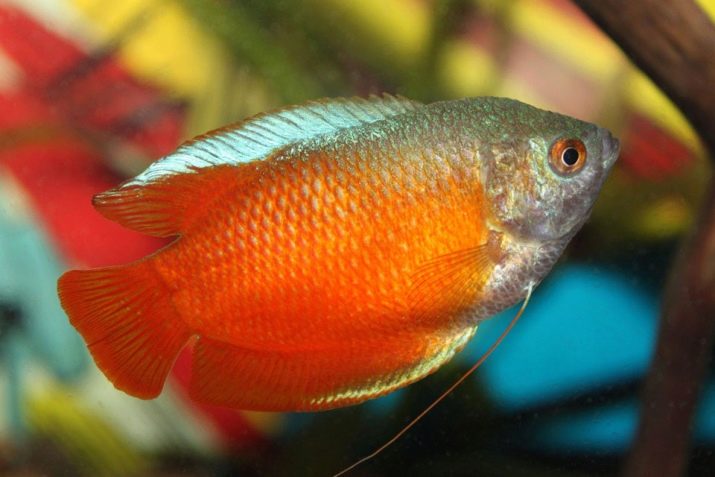
- Coral. Its color is close to reddish brown. Coral lalius also does not lose its characteristic striping.
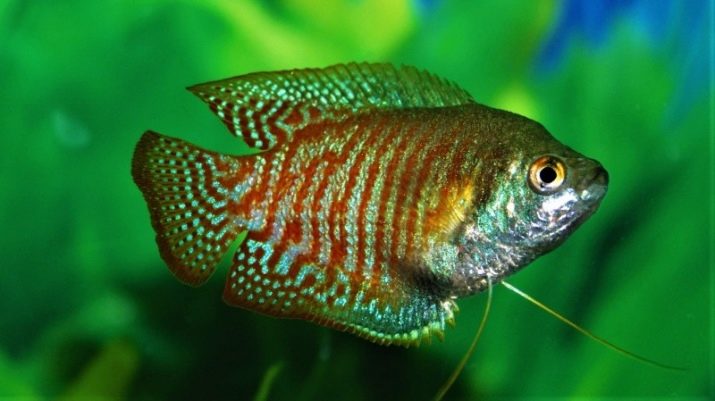
- Rainbow. Fish of this species are striped, have a bright and saturated color of stripes, close to scarlet. But only the male looks like this - the females have an expressionless gray-brown body.
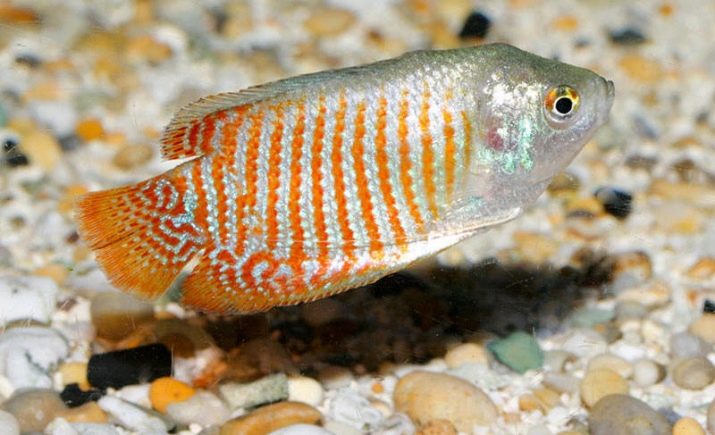
- Blue. This variety has a rich light blue body. Blue lalius looks interesting, but is less common than others.
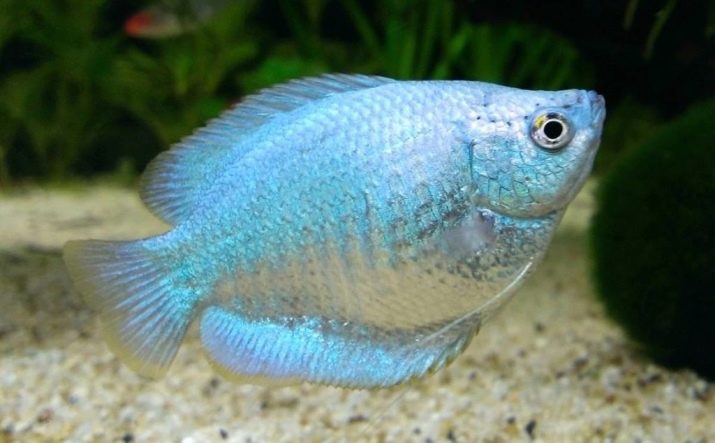
- Emerald. Has pronounced red stripes against a greenish body. Emerald lalius has a light pearl tint, very decorative.
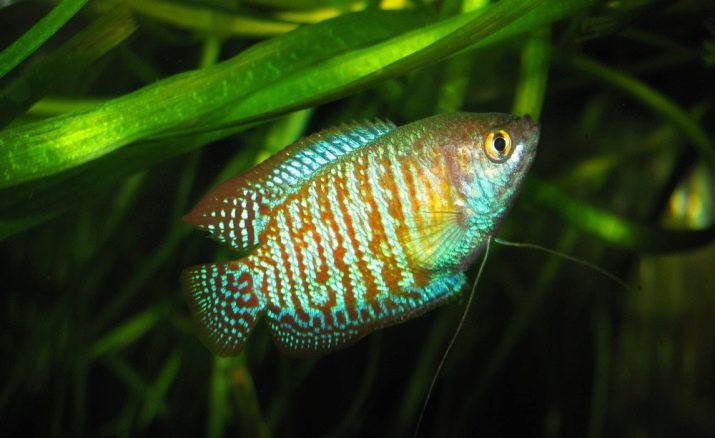
All these species successfully survive in captivity and thrive in an artificial environment. Ordinary or classic lalii are not as brightly colored as aquarium ones. Their body has a color close to gray or brown. Having studied cobalt, red, neon, rainbow and other types of lalius with a description, you can easily choose pets for your aquarium.
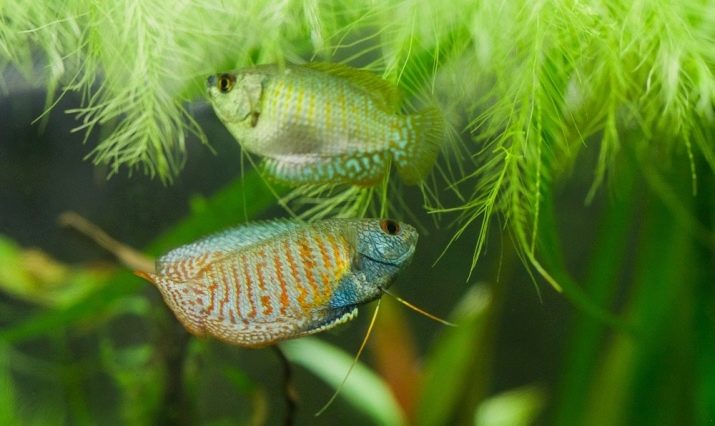
How to choose?
The choice of Lalius in a pet store is associated, first of all, with the problem of acquiring a healthy fish without pathologies, parasites and diseases. The main rule here is the choice of young individuals. Do not be seduced by the beauty of a large male - most likely, this fish will live no more than 1 year. And if you take a young lalius, he will be able to please the owners for 2-5 years, depending on the conditions of detention.
In addition, large fish may not bring offspring, and if breeding is planned, this should also be taken into account.
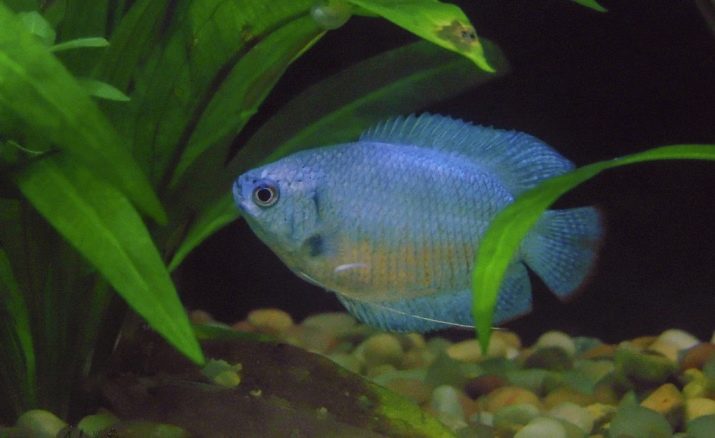
When choosing a place to buy lalius, it is better to give preference to a pet store that has the necessary certificates and clear justifications for the origin of living goods. Don't be tempted by tempting advertisements for the sale of pets with direct supplies from Indonesia or India. Such fish can be infected with parasites, it is especially dangerous to plant an exotic lalius that has not passed quarantine into a common aquarium.
It is worth paying attention to the external appearance of the fish. Peeling scales, dull eyes, dangling or whitish fins are the reason for refusing to acquire an individual. But you shouldn't worry about the slowness of the fish or gasping for air.For Lalius, this behavior is quite typical.
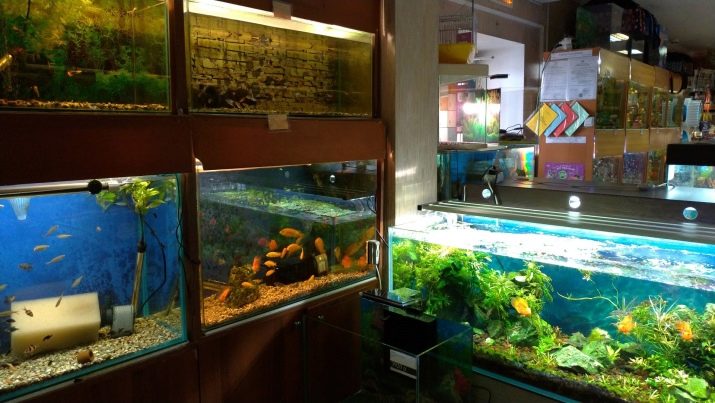
How to distinguish a female from a male?
Determining the sex of Lalius is quite simple, they have a well-pronounced sexual dimorphism. The main difference between a male and a female is size - males are much larger, 7-9 cm in length, females grow no more than 6 cm. In addition, body color can also be attributed to differences. In males, it is bright; vertical stripes of blue and red are well pronounced on the body. With age, the anal and dorsal fins acquire an elongated shape.
Females have a simple silvery body color, without noticeable stripes. The fins are translucent, short, rounded. They are rather inconspicuous and look less decorative.
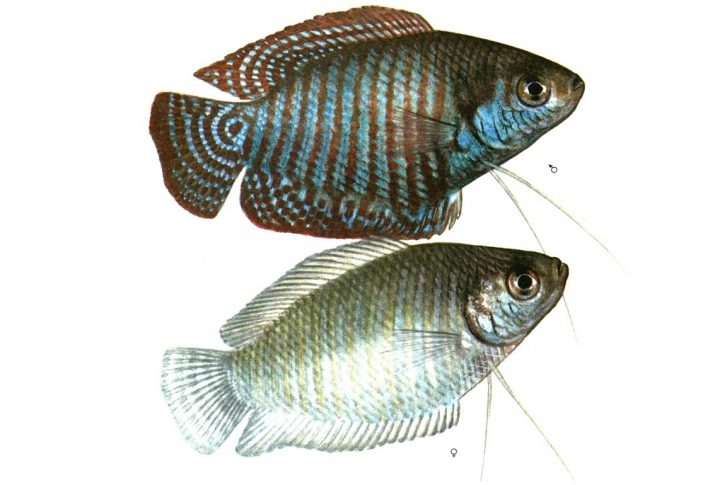
Content rules
The rules for keeping lalius in an aquarium are as simple as possible. They do not need complicated or special care. But these exotic pets are quite sensitive to the purity of the water. They need frequent water changes, especially if the aquarium is heavily populated. For a couple, a tank with a volume of 20 liters will be enough (10 liters per fish), with an increase in the number, the volumes increase proportionally.
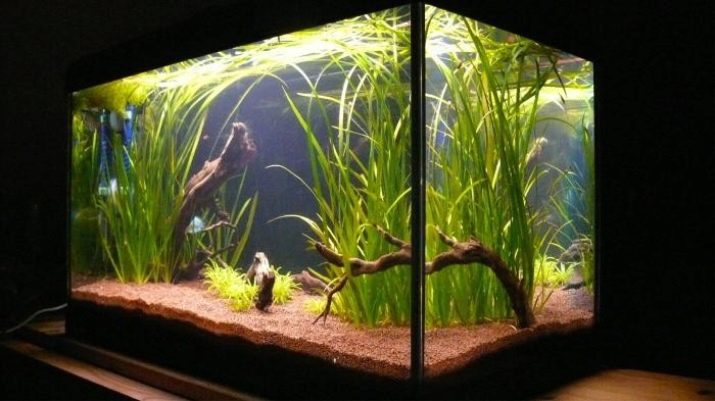
Calmness is important for lalius, as they are rather shy, they are stressed by the noise. It is recommended to install the tank in a place away from noise, strong light sources. Inside the container, it is imperative to place soil and vegetation in which these underwater inhabitants like to hide. When forming a school of fish, it is important to keep a balance between the number of males and females.
Males can fight among themselves, but if the number of females is noticeably greater, the likelihood of conflict will be minimal.
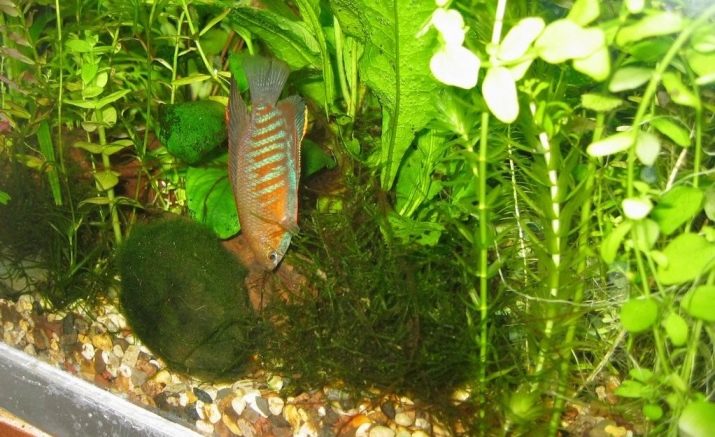
In caring for lalius, care must be taken to create a comfortable environment in the aquarium. The following parameters are optimal.
- Temperature conditions. It should be in the range of 22-27 degrees, a sharp change in the indoor climate or significant cooling, heating of water is not encouraged. The replacement fluid must be heated to the required values. This is due to the fact that in labyrinth fish, under the influence of these factors, irreversible changes in the body can occur.
- Hardness of the environment. Should not exceed 5-18 units, special additives are used for softening, prolonged settling or thorough boiling.
- Acidity. The optimal pH values are from 6 to 8.
Lyaliuses are able to breathe oxygen from the air, so installation of a filter is not necessary in their aquarium. A weak flow is allowed, but it is possible to do without artificial movement of masses of liquid. In addition, the container must be covered, otherwise the pets will jump out of the water. The lid will also keep the tank from losing heat.
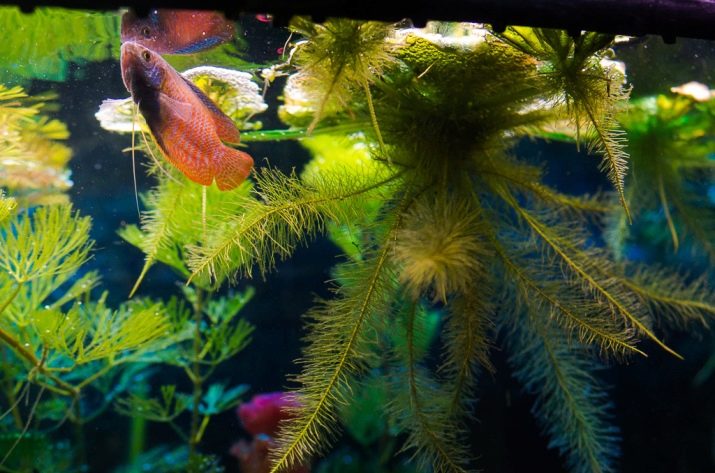
When selecting soil for lalius, it is imperative to give preference to dark sand, fine gravel, which can favorably set off the bright color of the fish's body. At the bottom for pets, you need to place grottoes, caves, and other shelters. In addition, it is imperative to pay attention to the planting of floating plants that can form dense thickets.

Power features
Feeding fish can be organized without unnecessary difficulty. Lyaliusi willingly eat live food and dry flakes. The frequency of feeding is 1-2 times a day. Anything that is not eaten in the first 2-5 minutes must be removed from the tank. It is impossible to give food more often: the fish are prone to obesity, it is recommended to arrange weekly fasting days for the pets.
Dwarf gourami pick up food from the surface of the water. In order for them to eat normally, feed slowly soaking and settling to the bottom is required.
Flakes do well with this mission, additionally they give a corotra, brine shrimp, tubifex.

Breeding
Lyalius is a fish with a fairly rapid puberty. At home, breeding it is possible from 5 months, by which time the fish already has a body length of 4-5 cm. For the reproduction of fish, it is necessary to equip a separate spawning aquarium with a volume of 40 liters or more, filled with water to a height of no more than 15 cm from the bottom. This is necessary for the survival of fry, which have an undeveloped labyrinth apparatus in the first month of life.
The medium should be neutral in acidity, rather soft. Inside, the spawning aquarium is filled with plants with small leaves; a low-power filter with a closed mesh or sponge water intake is used to purify the water. Constant water parameters, high humidity and stable temperature conditions are very important for future offspring. The use of glass or film, which covers the tank, helps to ensure them.
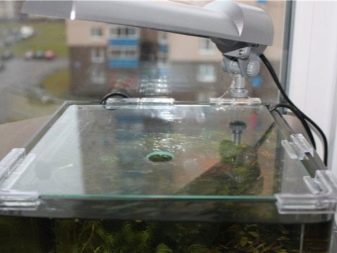
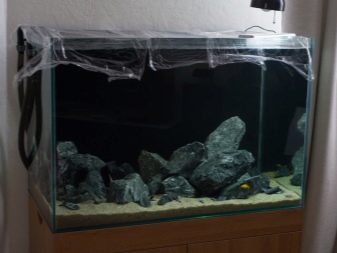
Before spawning begins, both the male and the female are fed vigorously, increasing the usual dose of food or the frequency of feeding. It is recommended to increase the proportion of live food, add frozen food. As soon as a female specimen acquires a rounded appearance with a swollen abdomen, it is transferred to a future spawning grounds. The female is kept separately for about 1 week, then the male is transplanted to her.
It is advisable to perform these manipulations at night.
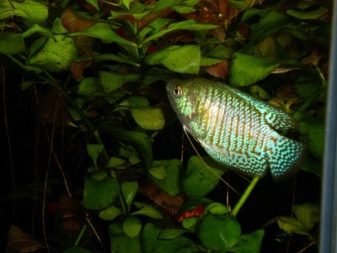

If the conditions were right, the reservoir will show signs of nest construction by morning. They look like bubble foam close to the surface. Unlike other labyrinth fish, laliuses additionally use plant raw materials to form the future incubator. During this period, the male drives away the female, and she will need green shelters for a quiet rest.
As soon as the process of creating a nest is completed, the female again plays the dominant role. She actively flirts with the male, touches him with her muzzle and belly, swims under the place where the nest is. The spawning process takes place in this position, under the bubble mass. The fish intertwine and produce eggs while fertilizing them at the same time. The process is repeated until the female's egg reserves are completely empty.

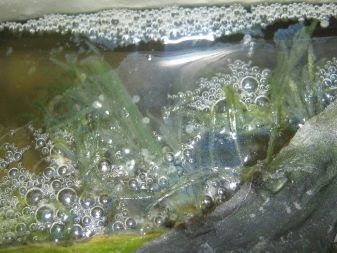
Further, the male takes care of the nest. The father protects the nest for 36 hours, picks up the fallen eggs. It is better to plant the mother immediately so that she does not suffer from his aggression.
After the destruction of the nest and the fry emerge into the aquarium, it is imperative to plant the male.
The fry already hatched from the eggs need to maintain a constant state of the environment. In the early days, they are fed with ciliates, as they grow, microworms or brine shrimp are included in the diet. Feeding is often required so that the young are constantly fed. It is hunger that is the main reason for the death of the Lalius offspring in the first week of life. Upon reaching a body length of 1 cm, young animals can be transferred to ready-made food in flakes.
As larger individuals grow, they are deposited in separate aquariums or containers. They experience constant hunger, can attack fellows, show signs of cannibalism.
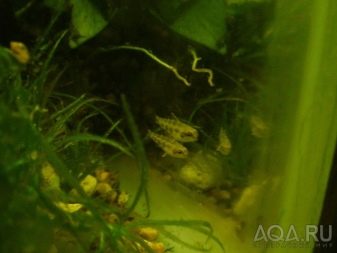
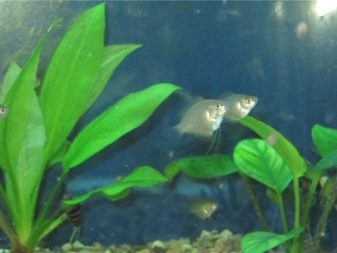
Compatibility with other fish
Lyaliusi are fish that get along well with representatives of other labyrinth species, calm decorative species. They are cautious and most often spend time away from other inhabitants of the aquatic world. Laliusi are especially actively hiding during the adaptation period, but after its completion they communicate well with their neighbors.
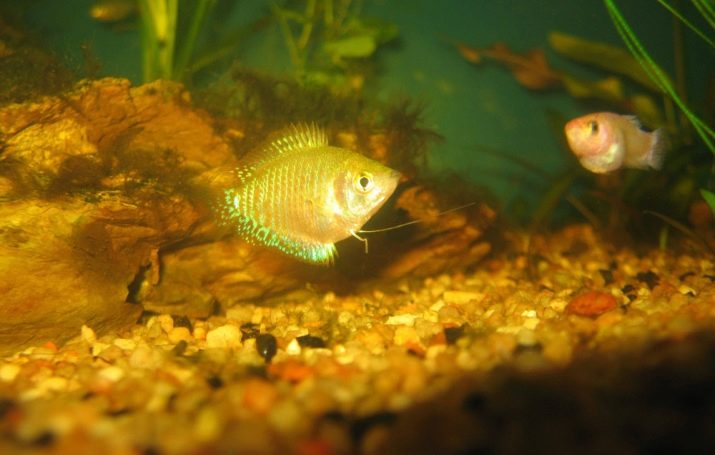
It is not recommended to choose too active, nimble fish as other inhabitants of the aquarium. They will easily deprive the sluggish dwarf gourami of food, he will experience hunger. Well suited for joint maintenance of scalar, barbs, loaches, catfish, macropods. There is good compatibility with different types of gourami - fish related to each other will not conflict.
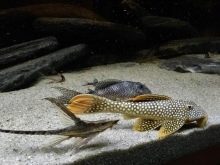


Catfish corridor will be a useful companion for these fish. Laliuses floating near the surface will not experience discomfort from a neighbor living in the bottom layers. In addition, the corridor will be able to finish off the food that settles to the bottom, and will ensure the maintenance of the purity of the water.
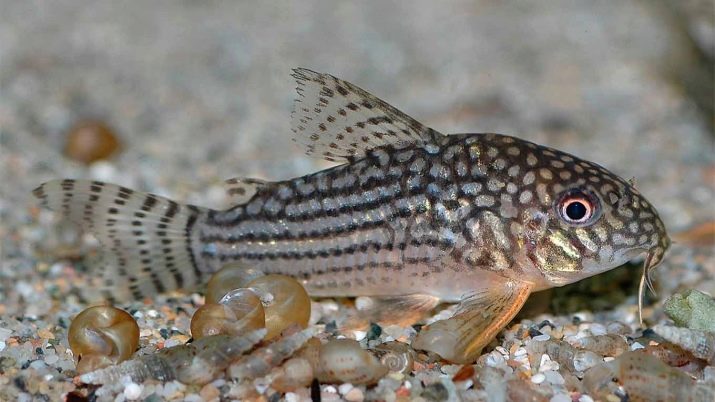
It is worth excluding the joint keeping of lalius with large, aggressive fish with a predatory instinct. The main danger for them is zebrafish, saber-toothed tetras, cichlids, astronotuses. A large mouth allows them to swallow smaller prey whole, and an enviable appetite will lead to a quick cleanup of the aquarium of possible food competitors.
Another example of an unsuccessful neighbor is the cockerel. The fighting fish will see a contender for its territory in the dwarf gourami and will begin to fight for a place in the aquarium. Even guppies can encroach on overly peaceful lalius and threaten their safety.
For more information on the maintenance of aquarium lalius, see the next video.








